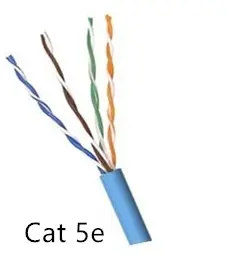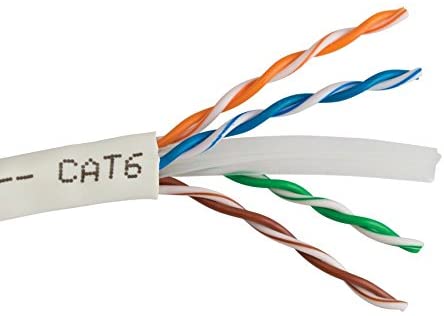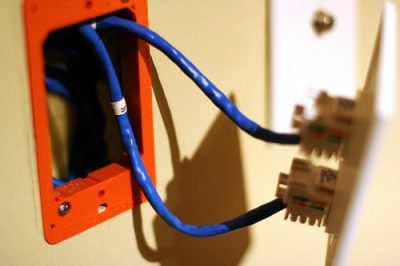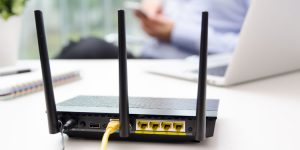we can help you choose the right cable
Cat5e vs. Cat6: Which Ethernet Cable is Right for Your Home or Business?
When it comes to building a reliable wired network, choosing the right Ethernet cable is just as important as picking the right router or switch. Two of the most common cable types used today are Cat5e and Cat6. While both look similar on the outside, the differences inside can have a big impact on speed, performance, and future-proofing.



MISSION-DRIVEN
Cat5e (Category 5 Enhanced) is an upgraded version of the older Cat5 standard. It’s been the workhorse for wired networks for over two decades, offering speeds up to 1 Gbps over distances of up to 100 meters.
Cat6 (Category 6) is the next step up. It’s designed to handle higher frequencies, up to 250 MHz (compared to Cat5e’s 100 MHz), and can support speeds up to 10 Gbps — though only for shorter distances (up to 55 meters) before dropping to 1 Gbps over longer runs.
Key Differences Between Cat5e and Cat6
1
Cat5e: Supports up to 1 Gbps speeds, with a bandwidth of 100 MHz. This is still plenty for many home networks and small businesses.
Cat6: Supports 10 Gbps speeds for shorter runs, with a bandwidth of 250 MHz. That extra bandwidth means it can handle more data at once, reducing network congestion.
Verdict: If you’re running basic internet, streaming, or light office work, Cat5e works fine. If you’re doing heavy data transfers, gaming, or want to future-proof, Cat6 is the better choice.
2
Cat6 cables are built with tighter twists in the copper pairs and often include a separator between pairs. This reduces crosstalk — interference that can slow down your connection. Cat5e also reduces crosstalk but not to the same degree. Verdict: For environments with a lot of electronic interference, like offices with multiple network devices, Cat6 has a clear advantage.
3
Internet speeds and networking demands continue to rise. While Cat5e can handle current residential needs, Cat6 ensures you won’t have to rewire in a few years when faster speeds become standard. With ISP internet speeds being upgraded constantly to provide faster, more reliable connections, Cat6 is a better course to take for future-proofing your home or business. Even if you don’t need higher speeds today, you could in the very near future — and having Cat6 already in place means you’ll be ready without the cost or hassle of another installation.



Budget-conscious projects where speed requirements are moderate.
Residential homes with internet speeds under 1 Gbps.
Short-term solutions where future upgrades are not a concern.
Businesses or households planning to upgrade internet speeds in the next 5–10 years.
Data-heavy environments like video editing, large file transfers, and online gaming.
Commercial spaces where interference and long-term durability matter.
Smart homes with multiple connected devices.
Anyone who wants to be ready for the next jump in ISP speeds without rewiring later.
Choosing the right cable is only half the equation — proper installation makes all the difference. At American Installs, we:
Use high-quality Cat5e and Cat6 cabling rated for in-wall or outdoor use.
Provide professional terminations for maximum performance.
Offer both commercial and residential network wiring services.
Keep cables organized, labeled, and tested for speed before we leave.
Back our work with a warranty so you know your investment is protected.
Whether you need a single data drop for your home office or a full network installation for your business, we’ll help you choose the right cable and install it correctly the first time.
If you’re looking for affordable, reliable networking, Cat5e is still a solid choice. But if you want to future-proof your home or office, enjoy faster speeds, and minimize interference, Cat6 is the smarter investment — especially with internet service providers upgrading speeds at a rapid pace.
📞 Call American Installs at (281) 300-7153 or
💻 Visit AmericanInstalls.com to schedule your professional network wiring installation today.
© 2025 Lunno. All Rights Reserved.
281-374-4380